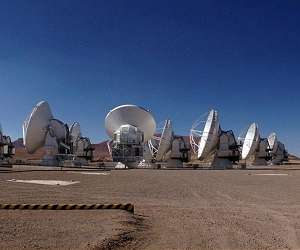Observations by NASA’s Hubble Space Telescope are showing that the unexpected dimming of the supergiant star Betelgeuse was most likely caused by an immense amount of hot material ejected into space, forming a dust cloud that blocked starlight coming from Betelgeuse’s surface.
Hubble researchers suggest that the dust cloud formed when superhot plasma unleashed from an upwelling of a large convection cell on the star’s surface passed through the hot atmosphere to the colder outer layers, where it cooled and formed dust grains. The resulting dust cloud blocked light from about a quarter of the star’s surface, beginning in late 2019. By April 2020, the star returned to normal brightness.
Betelgeuse is an aging, red supergiant star that has swelled in size due to complex, evolving changes in its nuclear fusion furnace at the core. The star is so huge now that if it replaced the Sun at the center of our solar system, its outer surface would extend past the orbit of Jupiter.
The unprecedented phenomenon for Betelgeuse’s great dimming, eventually noticeable to even the naked eye, started in October 2019. By mid-February 2020, the monster star had lost more than two-thirds of its brilliance.
This sudden dimming has mystified astronomers, who scrambled to develop several theories for the abrupt change. One idea was that a huge, cool, dark “star spot” covered a wide patch of the visible surface. But the Hubble observations, led by Andrea Dupree, associate director of the Center for Astrophysics | Harvard and Smithsonian (CfA), Cambridge, Massachusetts, suggest a dust cloud covering a portion of the star.
Several months of Hubble’s ultraviolet-light spectroscopic observations of Betelgeuse, beginning in January 2019, yield a timeline leading up to the darkening. These observations provide important new clues to the mechanism behind the dimming.
Hubble captured signs of dense, heated material moving through the star’s atmosphere in September, October, and November 2019. Then, in December, several ground-based telescopes observed the star decreasing in brightness in its southern hemisphere.
“With Hubble, we see the material as it left the star’s visible surface and moved out through the atmosphere, before the dust formed that caused the star to appear to dim,” Dupree said. “We could see the effect of a dense, hot region in the southeast part of the star moving outward.
“This material was two to four times more luminous than the star’s normal brightness,” she continued. “And then, about a month later, the south part of Betelgeuse dimmed conspicuously as the star grew fainter. We think it is possible that a dark cloud resulted from the outflow that Hubble detected. Only Hubble gives us this evidence that led up to the dimming.”
Massive supergiant stars like Betelgeuse are important because they expel heavy elements such as carbon into space that become the building blocks of new generations of stars. Carbon is also a basic ingredient for life as we know it.
Tracing a Traumatic Outburst
Dupree’s team began using Hubble early last year to analyze the behemoth star. Their observations are part of a three-year Hubble study to monitor variations in the star’s outer atmosphere. Betelgeuse is a variable star that expands and contracts, brightening and dimming, on a 420-day cycle.
Hubble’s ultraviolet-light sensitivity allowed researchers to probe the layers above the star’s surface, which are so hot – more than 20,000 degrees Fahrenheit – they cannot be detected at visible wavelengths. These layers are heated partly by the star’s turbulent convection cells bubbling up to the surface.
Hubble spectra, taken in early and late 2019, and in 2020, probed the star’s outer atmosphere by measuring magnesium II (singly ionized magnesium) lines. In September through November 2019, the researchers measured material moving about 200,000 miles per hour passing from the star’s surface into its outer atmosphere.
This hot, dense material continued to travel beyond Betelgeuse’s visible surface, reaching millions of miles from the seething star. At that distance, the material cooled down enough to form dust, the researchers said.
This interpretation is consistent with Hubble ultraviolet-light observations in February 2020, which showed that the behavior of the star’s outer atmosphere returned to normal, even though visible-light images showed that it was still dimming.
Although Dupree does not know the outburst’s cause, she thinks it was aided by the star’s pulsation cycle, which continued normally though the event, as recorded by visible-light observations. The paper’s co-author, Klaus Strassmeier, of the Leibniz Institute for Astrophysics Potsdam, used the institute’s automated telescope called STELLar Activity (STELLA), to measure changes in the velocity of the gas on the star’s surface as it rose and fell during the pulsation cycle. The star was expanding in its cycle at the same time as the upwelling of the convective cell. The pulsation rippling outward from Betelgeuse may have helped propel the outflowing plasma through the atmosphere.
Dupree estimates that about two times the normal amount of material from the southern hemisphere was lost over the three months of the outburst. Betelgeuse, like all stars, is losing mass all the time, in this case at a rate 30 million times higher than the Sun.
Betelgeuse is so close to Earth, and so large, that Hubble has been able to resolve surface features – making it the only such star, except for our Sun, where surface detail can be seen.
Hubble images taken by Dupree in 1995 first revealed a mottled surface containing massive convection cells that shrink and swell, which cause them to darken and brighten.
A Supernova Precursor?
The red supergiant is destined to end its life in a supernova blast. Some astronomers think the sudden dimming may be a pre-supernova event. The star is relatively nearby, about 725 light-years away, which means the dimming would have happened around the year 1300. But its light is just reaching Earth now.
“No one knows what a star does right before it goes supernova, because it’s never been observed,” Dupree explained. “Astronomers have sampled stars maybe a year ahead of them going supernova, but not within days or weeks before it happened. But the chance of the star going supernova anytime soon is pretty small.”
Dupree will get another chance to observe the star with Hubble in late August or early September. Right now, Betelgeuse is in the daytime sky, too close to the Sun for Hubble observations. But NASA’s Solar Terrestrial Relations Observatory (STEREO) has taken images of the monster star from its location in space. Those observations show that Betelgeuse dimmed again from mid-May to mid-July, although not as dramatically as earlier in the year.
Dupree hopes to use STEREO for more follow-up observations to monitor Betelgeuse’s brightness. Her plan is to observe Betelgeuse again next year with STEREO when the star has expanded outward again in its cycle to see if it unleashes another petulant outburst.
Related Links
Hubble Site
Stellar Chemistry, The Universe And All Within It
|
We need your help. The SpaceDaily news network continues to grow but revenues have never been harder to maintain. With the rise of Ad Blockers, and Facebook – our traditional revenue sources via quality network advertising continues to decline. And unlike so many other news sites, we don’t have a paywall – with those annoying usernames and passwords. Our news coverage takes time and effort to publish 365 days a year. If you find our news sites informative and useful then please consider becoming a regular supporter or for now make a one off contribution. |
||
|
SpaceDaily Monthly Supporter $5+ Billed Monthly |
SpaceDaily Contributor $5 Billed Once credit card or paypal |
|
Astronomers discover most-distant Milky Way-like galaxy ever observed
Washington DC (UPI) Aug 12, 2020
Astronomers have discovered a Milky Way lookalike 12 billion light-years from Earth – the most distant Milky Way-like galaxy ever observed – according to a study published Wednesday in the journal Nature.
When scientists study light from so far away, they’re seeing something that is 12 billion years old, revealing the universe as it was just 1.4 billion years after the Big Bang.
Finding such a stable, intact galaxy was a surprise, astronomers said.
“Galaxies in the early univers … read more

Pop culture practitioner. Bacon expert. Explorer. Tv maven. Wannabe student. Subtly charming social media nerd.





